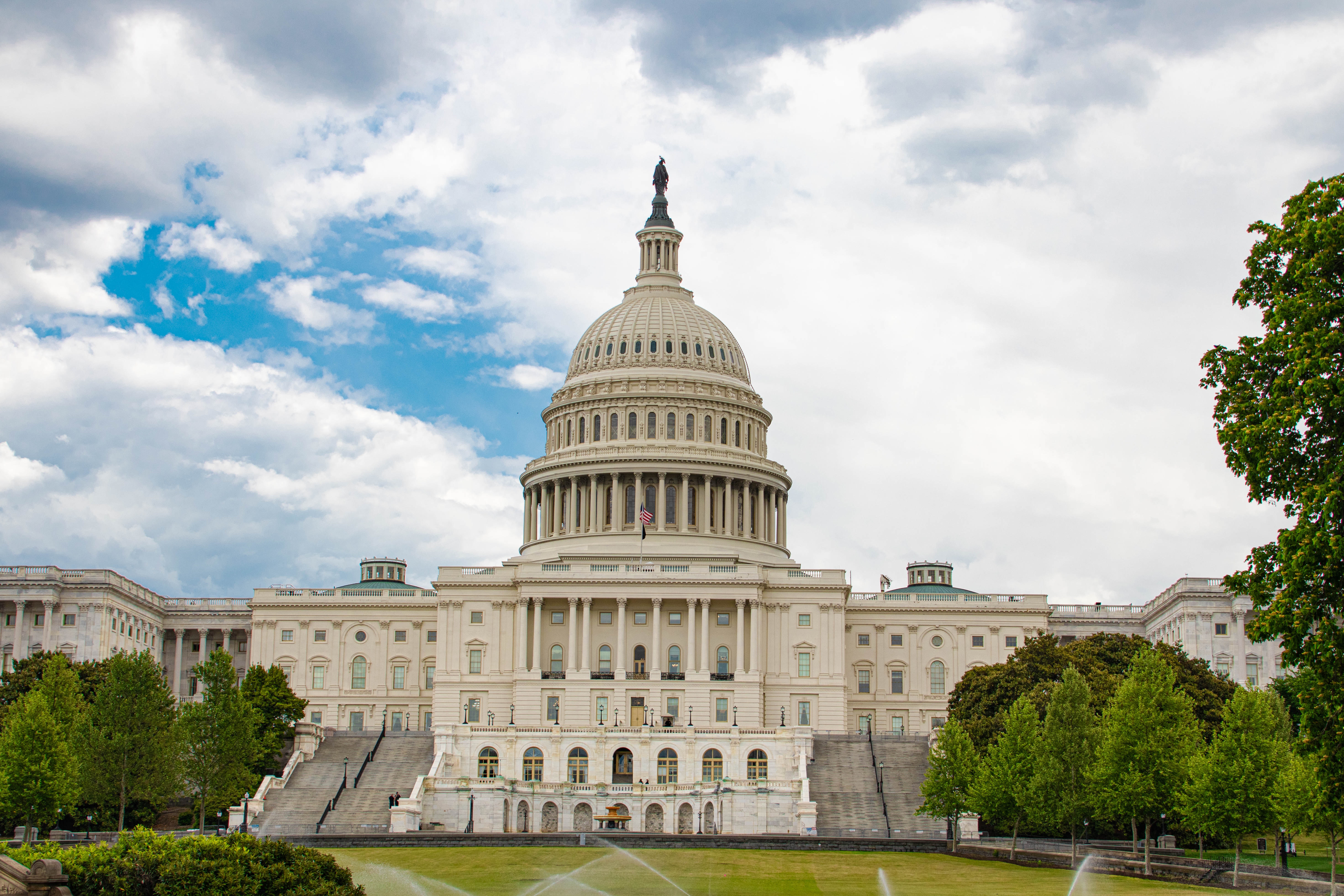
All Eyes on States in 2023
States play a significant role in shaping the policies that determine child care access, affordability, quality and sustainability. There are a few factors at play this year that may act as a catalyst for states to advance and invest in sustainable child care policies. This blog explores the state legislative opportunities and emerging child care priorities among state policymakers as we embark on the 2023 legislative sessions.
State Sessions Begin
All states are in session in 2023, with most states beginning their legislative sessions in January. Alabama and Florida won’t officially convene until March and Louisiana will be the last to convene, in April. As sessions begin, governors announce their priorities for the upcoming fiscal year through State of the State addresses, executive orders and officially in their state budget proposals. Executive budget proposals are usually developed throughout the summer and fall months and are typically released in early January. They reflect the state’s revenue forecast and consider state agency requests and recommendations. For most states, the fiscal year runs from July 1 through June 30. Alabama, Michigan, New York, Texas and D.C., however, all have fiscal year beginning on alternative dates.
The state legislature then responds to the executive budget proposal and offers modifications. In states with two chambers, each house typically releases their own budget response to the governor’s proposed plan. The state legislature holds public hearings on the budget proposal to gather public input from advocates on what should be included in the final budget. These are usually conducted in each house by the appropriations or finance committees, though in some states, these hearings are conducted by a joint budget committee with representatives from both houses. An official balanced state budget is then finalized with agreement from the legislative and executive branches. The governor signs or vetoes budget bills; in many states, though not all, governors have the ability to line-item veto particular sections of the budget while approving the rest of the bill. State budgets, and policy proposals, are top of mind as state legislative sessions move forward.
An Opportunity for States to Make Progress
There are a few factors at play that set states up to make sustainable policy decisions to support child care providers and families this year:
- Government control. At the federal level, Congress is divided and it’s unclear if there’s a path forward to securing policy change for child care over the next two years. States, on the other hand, are in a stronger position to make long-term decisions, with at least half of state legislatures gaining veto-proof majorities this year as a result of the 2022 election cycle. That means that in many places state government has strong control over what does—or doesn’t—get enacted.
- Voter support. Two national polls conducted after the 2022 midterm elections found that there is broad, bipartisan agreement among voters that the national shortage of affordable child care is harmful to the finances of families, businesses and the U.S. economy.
- A down payment. Federal relief funding was a lifeline for many in the child care sector, and it was also a much-needed down-payment for states who used it to start making long-term measurable changes to the child care sector. In the 2022 state legislative sessions, it was clear that states recognized the value of the relief investments. Some states began to build off the policies they initially implemented with federal relief funding to increase early childhood education supply, affordability, quality and compensation with the addition of state general funding.
- Expiring funds. States will hit a major spending deadline to liquidate federal relief funding by September 30, 2023, for CARES, CRRSA and ARPA stabilization grant dollars.
- State reserves. According to the latest report by the National Association of State Budget Officers, state revenues have experienced double-digit growth over the last two years. While states are anticipating slower revenue growth in FY 2023, the report finds that states have prepared for future economic downturns by spending federal relief funds, paying down debt and increasing the size of their rainy-day funds to record levels. State rainy-day fund balances increased 58% since 2020, with 19 states reporting rainy day fund balances exceeding 15% of general fund spending. NASBO reports that most enacted state budgets from FY 2022 will continue to increase their rainy-day funds throughout FY 2023.
Executive Branch Priorities
Child care is top of mind for many governors. It was included as a priority for newly elected governors Katie Hobbs (D-AZ), Josh Green (D-HI), and Tina Kotek (D-OR) in their campaign platforms last fall. Child care is also becoming a common policy priority highlighted in governors’ State of the State Addresses and in executive budget proposals. While this list is not exhaustive, some announcements include:
- Arizona: Governor Katie Hobbs (D) announced that making child care affordable for families and early childhood education free for students is included in her First 100 Days Initiative.
- Delaware: Governor John Carney (D) announced his budget recommendation to invest $10 million to increase reimbursement rates to the 75th percentile of the 2021 market rate survey, expand subsidy eligibility up to 200% of the federal poverty level (FPL), and double subsidy funding to specifically serve more 3- and 4-year-olds.
- Hawaii: Building upon an appropriation from 2022 and a statutory requirement setting a goal to enroll all 3- and 4-year-olds in prekindergarten by this year, Lieutenant Governor Sylvia Luke (D) announced the budget will request $40 million to expand access to 3-year-olds and increase child care provider subsidy rates.
- Illinois: Governor J.B. Pritzker’s (D) budget request included $250 million for child care and early learning as part of the Governor’s Smart Start Illinois initiative. Of this funding, $175 million is new state general funding being dedicated to child care. The Governor called for $130 million to build a Child Care Workforce Compensation Contract. The budget request also included $75 million to support creating new preschool slots and a $70 million investment for the subsidy program.
- Iowa: While not in a budget proposal, Governor Kim Reynolds (R) shared her support for new initiatives that increase subsidy from 145% to 155% of the Federal Poverty Level and piloting a program to allow child care staff to receive subsidy assistance, regardless of income.
- Kansas: Governor Laura Kelly's (D) first executive order of her second term establishes an Early Childhood Transition Task Force to review the state’s early childhood programs and create a single-state agency consolidating early childhood initiatives and funding, which must be informed by the needs of families and communities.
- Maine: Governor Janet Mills (D) continues her prior year support for the child care workforce by proposing $7.8 million to fully fund the salary supplements for child care workers enacted in the FY 2022 budget. She also proposes $10.5 million to make prekindergarten more available and more accessible across Maine.
- Massachusetts: Governor Maura Healey’s (D) inaugural budget proposal invests in early education and care by providing $475 million to continue the state’s Operational Grants, $25 million for financial assistance for low-income families, $20 million for CCR&Rs, $20 million in rate increases for subsidized child care providers, and $5 million for Early Childhood Mental Health Consultation Services.
- Michigan: Governor Gretchen Whitmer (D) proposed budget expands the state’s preschool program by increasing eligibility from 250% FPL to 300% FPL, increase the per child allocation, provides additional funding for transportation, establishes a pilot to serve 3-year olds, funds start-up grants for the creation of new/expanded programs, and expands the number of days and weeks offered. It allocates $73.5 million in federal relief funding to maintain expansions to programs that are set to expire, such as keeping subsidy eligibility at 200% FPL, paying reimbursements based on enrollment, and funding for infant and toddler mental health. It also includes $24 million to support a child care educator tax credit, up to $3,000 annually, to incentivize and increase the number of early childhood educators.
- Minnesota: Governor Tim Walz (D) announced a $12 billion budget proposal to lower the cost of child care for middle-class families and expand tax credits for families who need help the most. This includes increasing funding for reimbursement rates to the 75th percentile, investing $90 million in the subsidy program to reach 9,000 new children, and establishing a full-day prekindergarten program for nearly 25,000 children using mixed-delivery. His budget proposal also recommends allocating $353 million in FY 24-25 and $345 million in FY 26-27 from the state’s general fund to address workforce compensation and benefits, training, higher education scholarships and start-up grants.
- Missouri: Governor Mike Parson (R) requested $56 million to expand free prekindergarten options to all 4-year-old children eligible for free and reduced priced lunch. His budget proposal includes $78 million to increase child care subsidy rates and establish three new child care tax credit programs.
- New York: Governor Kathy Hochul (D) proposes streamlining the subsidy application process through an online system for all counties, raising the subsidy eligibility limit to 85% SMI (equivalent to $93,200 for a NY family of four) to reach 113,000 more children, capping family co-pays at 1% of household income, and allowing families enrolled in SNAP, Medicaid, WIC and other benefits programs categorically eligible for subsidy assistance. Additionally, her proposal would spend down remaining federal relief funds to provide payments to providers.
- North Carolina: Governor Roy Cooper (D) recommends $1.5 billion in new funding for child care and early childhood education needs, including $500 million for grants to help maintain access to affordable early childhood education and $200 million to increase child care subsidies for rural and lower wealth communities.
- North Dakota: Governor Burgum’s (R) budget proposal for 2023-2025 calls for $76 million to improve the affordability, availability and quality of child care programs. These proposals are based on more than 14 months of work and discussions with child care providers, business leaders, the Workforce Development Council, legislators and other key stakeholders. They include increasing payment rates for infant and toddlers, expand subsidy eligibility, grants, and more.
- Ohio: Governor Mike DeWine (R) budget proposal would increase family income eligibility for subsidy from 142% to 160% FPL and provide $92.2 million over two years to provide 11,525 more children from low-income families with child care.
- Vermont: Governor Phil Scott (R) includes an additional $56 million, for a total of nearly $120 million annually, to expand access and affordability using existing, sustainable revenue growth. This would expand subsidies to families at 400% FPL. His proposal would also launch a two-year pilot to reduce community college tuition by 50% for early childhood education programs (among other sectors).
- Washington: Governor Jay Inslee (D) proposes increasing funding for child care and early learning by $855 million. His proposal would increase reimbursement rates to the 85th percentile and waive background fees for child care workers.
- Wisconsin: Governor Tony Evers (D) is proposing $340 million to provide a permanent state investment in the Child Care Counts Stabilization Payment Program that was created during the pandemic with federal relief funding. His budget proposal also includes $10 million to attract new providers and $22 million to support the “Partner Up!” Program, which supports employer-child care provider partnerships and child care provider staff recruitment and retention.
Now is the Time for Bold State Policy Action
Federal relief funding has been a lifeline for states to stabilize their child care systems, but most of this funding is required to be spent by this September. Relief funding gave states a critical opportunity to finally invest in the supply, quality and affordability of child care programs. Funds have been used to increase early childhood educators’ compensation, expand family subsidy eligibility, cap family copayments, raise reimbursements paid to providers and make grants available to providers to improve their program’s quality.
After decades of underfunding, federal relief funding gave each state a one-time down-payment to make much-needed improvements to the child care system. Without the injection of further federal funding, states must determine how they can sustain these policies and prevent the return to pre-pandemic levels of investments. While states should be cautious in protecting their rainy-day funds, they must understand there is a devastating storm brewing on the horizon for families and the economy if sustainable, long-term investments in child care that build upon policies seeded with relief funding are not made this year. States simply cannot afford to hold back in advancing substantial investments to mitigate an even worse child care crisis looming in the near future.
Across the country, child care resource and referral (CCR&Rs) agencies and other early childhood-connected groups are asking their policymakers to make bold investments in child care this year, especially around workforce compensation and retention efforts and making more families eligible for subsidy. While not an exhaustive list, some of these legislative recommendations for 2023 include:
- California Child Care Resource & Referral Network requests the final budget to provide support for the state’s CCR&Rs, rate reform, mixed-delivery, and child care workforce compensation. California’s CCR&R Network and other early learning advocates specifically request a 25% increase to current reimbursement rates and the adoption of an alternative methodology using a cost estimation model to determine future rates. Due to budget forecasting concerns, the executive budget proposal delays funding a previous budget agreement to fund new 20,000 child care slots until 2024-2025. Advocates in California request that the final budget does not delay this funding by one year and instead include funding to support the initial plan in the current budget cycle.
- Child Care Aware of North Dakota asks lawmakers to allocate funding to increase wages and benefits, streamline fingerprinting processes to prevent delays and support shared services.
- Child Care Aware of Washington requests the governor and legislature to develop an implementation plan for ensuring living wages for child care educators, wave background fees, raising reimbursement rates to the 85th percentile, and pay reimbursement rates on enrollment.
- Alaska’s CCR&R, thread, asks for increased state investment in the Child Care and Development Block Grant along with the completion of a cost-of-care survey to inform future reimbursement rates. Thread also requests the state to explore a state-funded benefits program and pay scale, reinstate its retention payment program (SEED ROOTS), and increase subsidy eligibility and the time period between recertification for families.
- Montana Advocates for Children recommends strategies be implemented to provide supplemental pay to child care educators and expand incentives for professional development and retention opportunities. They also specifically request $15 million to raise subsidy eligibility to 85% SMI, and $3 million to limit copays for families.
- Child Care Aware of Virginia requests the legislature expand subsidy assistance for families with school-age children with income below 85% SMI, provide sustainable investments in wage supplements beyond one-time bonuses, support strategies to implement a substitute pool, and make greater investments in the CCR&R system.
- The Family Conservancy, a CCR&R that serves both Kansas and Missouri, highlights the need for Kansas to adopt a cost-of-care model for setting reimbursement rates that accounts for the true cost of care in their response to Governor Kelly’s State of the State address.
- Raising Wisconsin calls for $300 million to continue Child Care Counts, which provides direct support to programs and can be used toward operating expenses and wage supplements.
- New York advocates urge lawmakers to establish a quality child care workforce compensation program, which would offer significant and sustained wage supplements to all licensed and registered providers as an interim strategy while a compensation scale is developed. They also recommend adopting categorial subsidy eligibility for families enrolled in other public assistance programs.
- In Texas, advocates request the state to create bedrock funding to provide stable income to child care providers through recruitment and retention stipends, sustainability grants to help offset programs’ fixed costs and increased reimbursement rates that reflect the true cost of care. Advocates are also asking the state to offer property tax relief to providers participating in the subsidy program.
- The Connecticut Early Childhood Alliance recommends increased payments to providers, free child care for early educators and funding for apprenticeship and scholarships for those interested in becoming a child care educator.
- North Carolina advocates call for more funding to the WAGE$ program and extending compensation stabilization grants with state investment.
- The Mississippi Early Learning Alliance asks the state to allocate lottery funds to a program that provides professional development and wage supplements directly to participating child care educators. It also recommends removing the requirement that a parent must cooperate with the child support enforcement to be eligible for subsidy.
- The Georgia Early Education Alliance for Ready Students requests $20 million to help maintain increased enrollment in its subsidy program, which was initially supported with federal relief funding, and increased enrollment by 10,000 children, and prioritizing children of income-eligible early educators for subsidy.
- Groundwork Ohio’s policy agenda includes implementing a wage schedule, stabilizing programs by supporting reimbursements based on enrollment, increasing subsidy eligibility to 200% FPL, expanding access to preschool programs for low income children, and establishing grants to incentivize new capacity for quality infant and toddler care with a fairly compensated workforce in centers and family child care programs.
Does your CCR&R or state advocacy coalition have a 2023 policy agenda they are sharing with state policymakers? Please feel free to reach out and share with us! For advocacy resources and trainings to help guide your 2023 legislative session activities, you can find more here.
Become an Advocate





